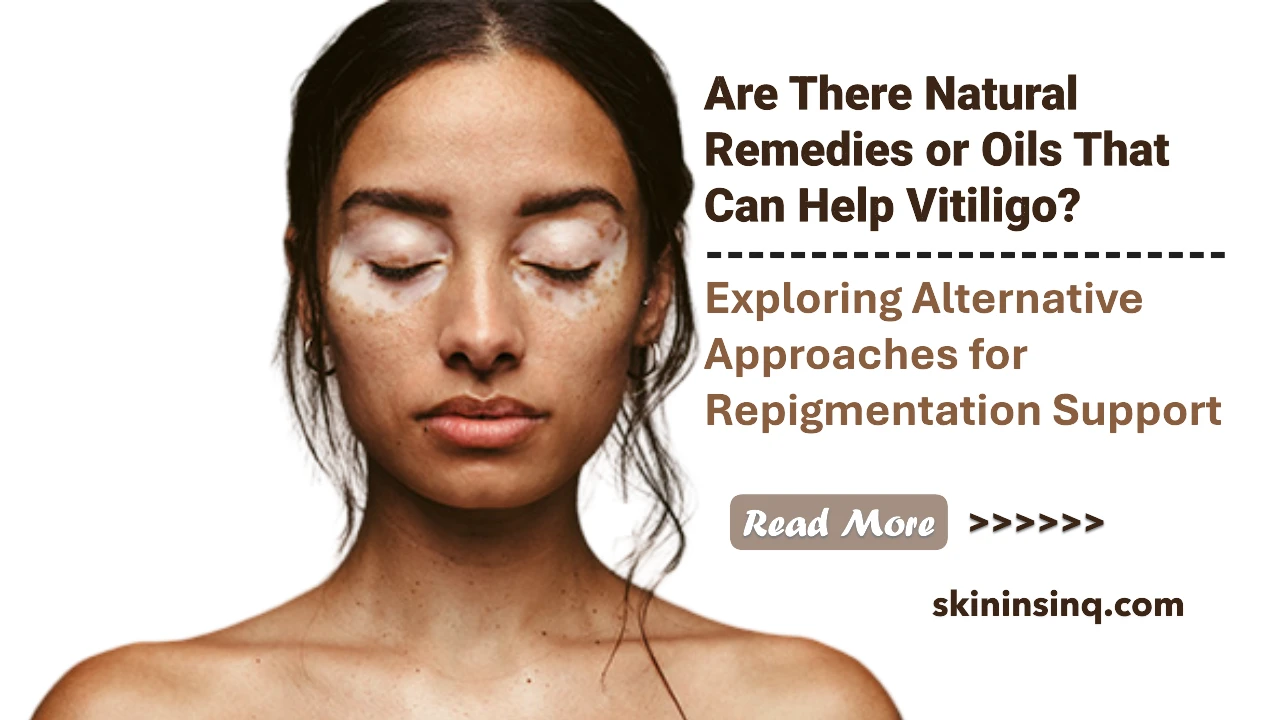Are There Natural Remedies or Oils That Can Help Vitiligo? Exploring Alternative Approaches for Repigmentation Support
Are There Natural Remedies or Oils That Can Help Vitiligo? Exploring Alternative Approaches for Repigmentation Support
While there is no proven natural cure for vitiligo, some natural remedies and plant-based oils have shown potential in supporting repigmentation, reducing inflammation, and improving skin health. These alternatives may not replace medical treatments but can be useful complementary options, especially in early or mild cases.
1. Babchi Oil (Psoralea corylifolia)
-
Benefits: Contains psoralen, a compound that increases the skin’s sensitivity to UV light, potentially stimulating melanin production.
-
Usage: Often used in Ayurvedic medicine with sunlight or UV exposure.
-
Caution: Can cause skin irritation or burns; should be used under supervision.
2. Coconut Oil
-
Benefits: Soothes the skin, reduces dryness, and has mild anti-inflammatory and antibacterial effects.
-
Usage: Can be applied daily to vitiligo patches to moisturize and protect the skin.
-
Note: Not proven to restore pigment but may improve skin condition and healing.
3. Turmeric and Mustard Oil
-
Benefits: Turmeric has anti-inflammatory properties; when mixed with mustard oil, it may help support skin regeneration.
-
Usage: A paste is traditionally applied to patches for several months.
-
Evidence: Anecdotal; limited scientific proof.
4. Ginkgo Biloba
-
Benefits: May slow the progression of vitiligo and encourage repigmentation by improving blood flow and reducing oxidative stress.
-
Usage: Typically taken as a supplement (standardized extract).
-
Studies: Some small clinical trials have shown positive results.
5. Aloe Vera
-
Benefits: Soothes irritated skin and supports overall skin health.
-
Usage: Apply fresh aloe vera gel to affected areas daily.
-
Effectiveness: Supports healing but not directly linked to pigment restoration.
6. Black Seed Oil (Nigella sativa)
-
Benefits: Known for anti-inflammatory and antioxidant properties; some studies suggest minor pigment improvement.
-
Usage: Apply topically or use in combination with other therapies.
-
Evidence: Limited, but gaining interest in complementary dermatology.
Important Considerations:
-
Always patch test natural products to avoid irritation.
-
Natural remedies are not a replacement for medical treatment, especially in progressive vitiligo.
-
Consult a dermatologist or Ayurvedic specialist before combining natural oils with clinical treatments like phototherapy.
Conclusion
Some natural remedies and oils, like babchi oil, ginkgo biloba, or black seed oil, may offer mild support in managing vitiligo, especially when used alongside conventional treatments. While the scientific evidence is still limited, these approaches may improve skin comfort, slow disease progression, and support emotional well-being. Always approach natural therapies with caution and professional guidance.

Related Blog
Can People with Dry Skin Also Have Acne? Understanding Breakouts Beyond Oily Skin Types
Aug 2, 2025 by Admin
General Acne
What Causes Oily Skin and Can It Be Managed Naturally? Exploring Root Causes and Gentle Solutions
Aug 2, 2025 by Admin
General
Does Popping Pimples Always Make Acne Worse? The Risks and Realities of Squeezing Breakouts
Aug 2, 2025 by Admin
General Acne
Do Oily Foods Make Pimples Worse? Uncovering the Truth Behind Diet and Breakouts
Aug 2, 2025 by Admin
General Acne